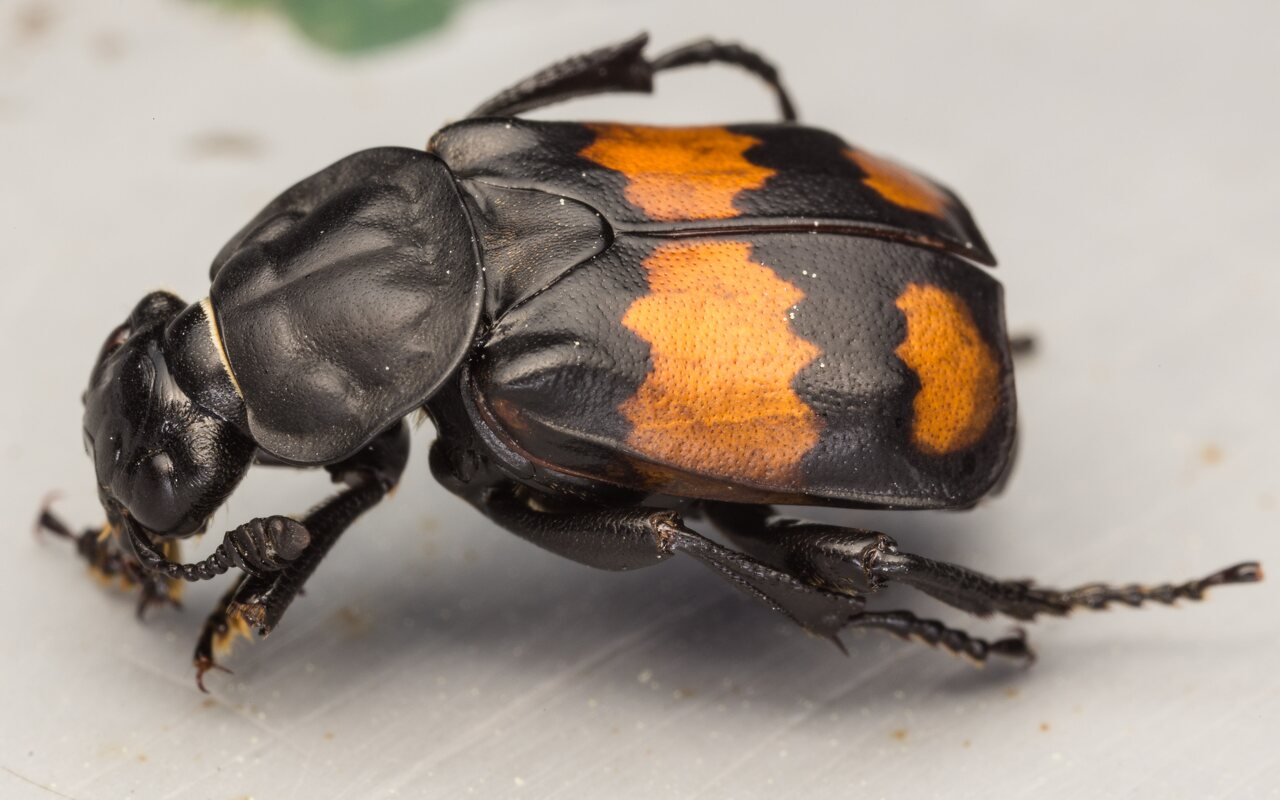
Nicrophorus vespilloides · juodbuožis duobkasys
- lesser vespillo burying beetle, common sexton beetle
- Schwarzfühleriger Totengräber, Schwarzhörniger Totengräber
- juodbuožis duobkasys
- meža kapracis
- grabarz żółtoczarny
- ukbeetles.co.uk/nicrophorus-vespilloides
- en.wikipedia.org/wiki/Nicrophorus_vespilloides
- naturespot.org.uk/species/common-sexton-beetle
These insect species boast a wide distribution that spans an extensive range of geographic areas, including the far northern regions of Scandinavia within Europe, to Siberia, and reaching into various parts of Asia, notably China and Japan. Additionally, their geographic range stretches into North America, covering northern parts of the United States and including much of southern Canada.
The beetles of N. vespilloides have highly variable body size that ranges from 12mm-20mm. They have two conspicuous orange-yellow bands on the elytra. The color of their antennae are completely black. Their orange and black markings serve as a warning sign to avian predators that defends them from attack. Their distinct wing cases are squarish in shape and are shorter than their abdomens. Both male and female parents are involved in the care and nurturing of their offspring contributing significantly to their success as a species.
Paplitęs Europoje, Sibire, Mongolijoje, Korėjoje, Kinijoje, Kazachstane, Irane ir Japonijoje, taip pat ir Šiaurės Amerikoje. Kūnas 12–18 mm. Juodas. Antsparniai juodi su 2 oranžiniais raiščiais. Antenų buoželė juoda. Priešnugarėlė plika, be geltonų plaukelių. Lietuvoje dažnas, ypač netoli miškų, dvėsenoje ir pūvančiose grybuose.
‥